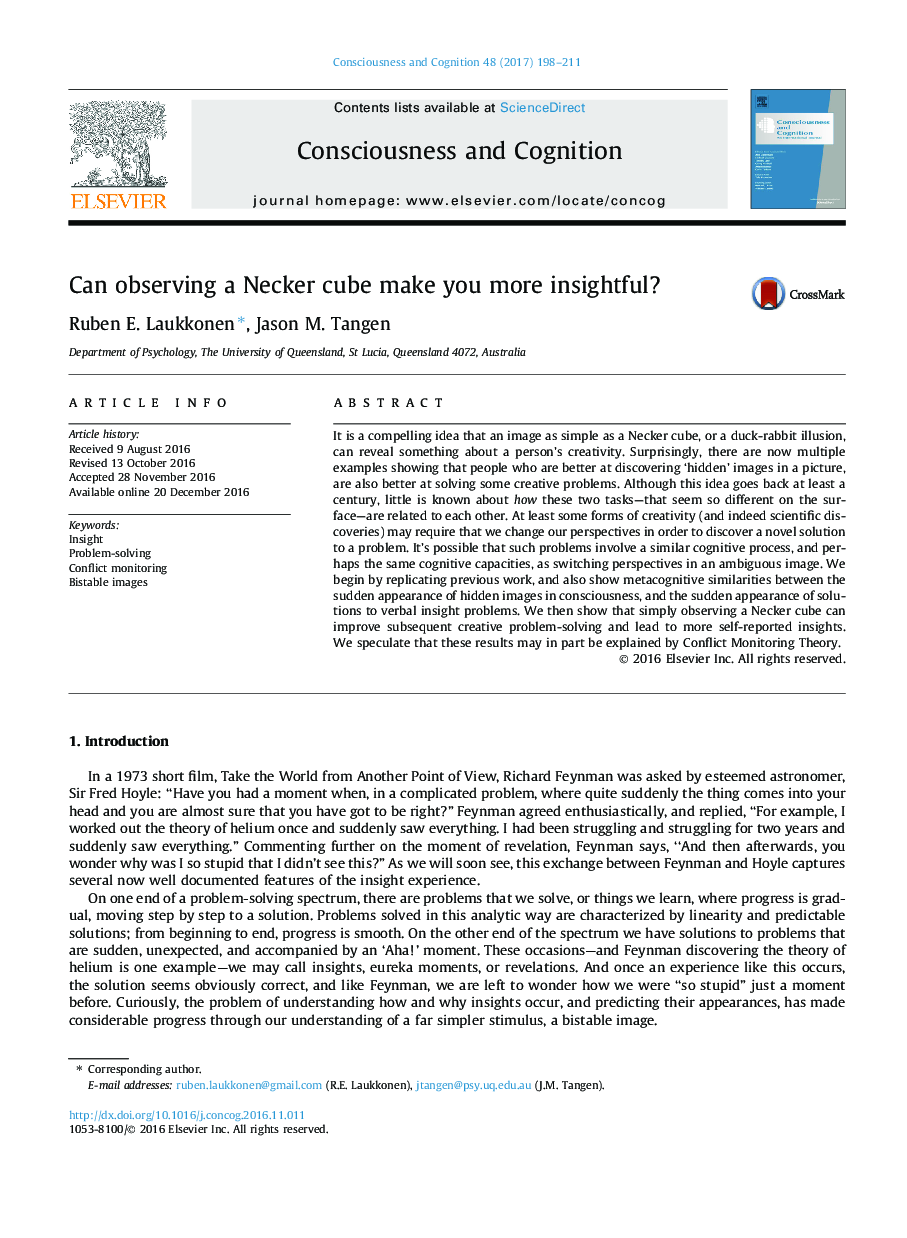| کد مقاله | کد نشریه | سال انتشار | مقاله انگلیسی | نسخه تمام متن |
|---|---|---|---|---|
| 5041906 | 1474163 | 2017 | 14 صفحه PDF | دانلود رایگان |
- We explore how bistable images are related to insight problem-solving.
- The conflict monitoring system is proposed as a common mechanism.
- Metacognitions between bistable images and insight problems are compared.
- Simply observing a Necker cube can improve insight problem-solving.
It is a compelling idea that an image as simple as a Necker cube, or a duck-rabbit illusion, can reveal something about a person's creativity. Surprisingly, there are now multiple examples showing that people who are better at discovering 'hidden' images in a picture, are also better at solving some creative problems. Although this idea goes back at least a century, little is known about how these two tasks-that seem so different on the surface-are related to each other. At least some forms of creativity (and indeed scientific discoveries) may require that we change our perspectives in order to discover a novel solution to a problem. It's possible that such problems involve a similar cognitive process, and perhaps the same cognitive capacities, as switching perspectives in an ambiguous image. We begin by replicating previous work, and also show metacognitive similarities between the sudden appearance of hidden images in consciousness, and the sudden appearance of solutions to verbal insight problems. We then show that simply observing a Necker cube can improve subsequent creative problem-solving and lead to more self-reported insights. We speculate that these results may in part be explained by Conflict Monitoring Theory.
Journal: Consciousness and Cognition - Volume 48, February 2017, Pages 198-211
